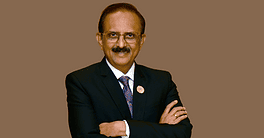DEAR READER
OCTOBER 2011 | VOL.25 NO. 9

When the International Monetary Fund and the World Bank have their annual meeting in Washington DC at the end of September, the atmosphere will most probably be very tense. The IMF has a new leader—the first female managing director in its history. The traditional agenda is unchanged, but there is a new sense of urgency. It is hard to recall a time when the questions on the agenda have been so wide open, querying: “Who can do what, and where in the world, to help economic recovery and avoid another recession?”
In the past few months we saw the eurozone sovereign crisis grow, followed by clear signs of an extremely weak recovery in the US coinciding with a very divided Congress, all of which was accompanied by a surge in inflation in developing countries. This perfect storm of events has not just increased the global sense of uncertainty but also widened the gray area between growth and stagnation.
The debate on job growth is so intense in all major industrial economies that fiscal and monetary policy have become the main issue in politicians’ agendas, and debates on fiscal tightening versus expansion have been more intense than ever before.
Closer coordination at the political and economic level is needed, as well as on the regulatory front. No magic formula, and no single country solution, will help a world where one of the most striking effects of globalization is the interdependence of states and regions. And this time, unlike a couple of years ago, the emerging markets may not be able to bail out the rest of the world. After all, developing markets still depend much more on exports to the rest of the world than on domestic demand.
For us at Global Finance , this season and this issue are not just a time for awards and ceremonies, but also a time to reflect on the fact that even during turmoil some financial institutions are better organized, stronger and more capable than others. We have tried very hard to identify them in each country and in each different category, and to focus on their performance.
The strong reaction that followed our early announcement of the 50 safest banks in the world, which is one of the highlights of this issue, is also indicative of a trend. There is obviously a strong desire by the public for safer financial institutions, and a desire by banks and other financial groups for recognition of their strength and stability. We consider it our task and goal to inform on all of this.
Andrea Fiano



